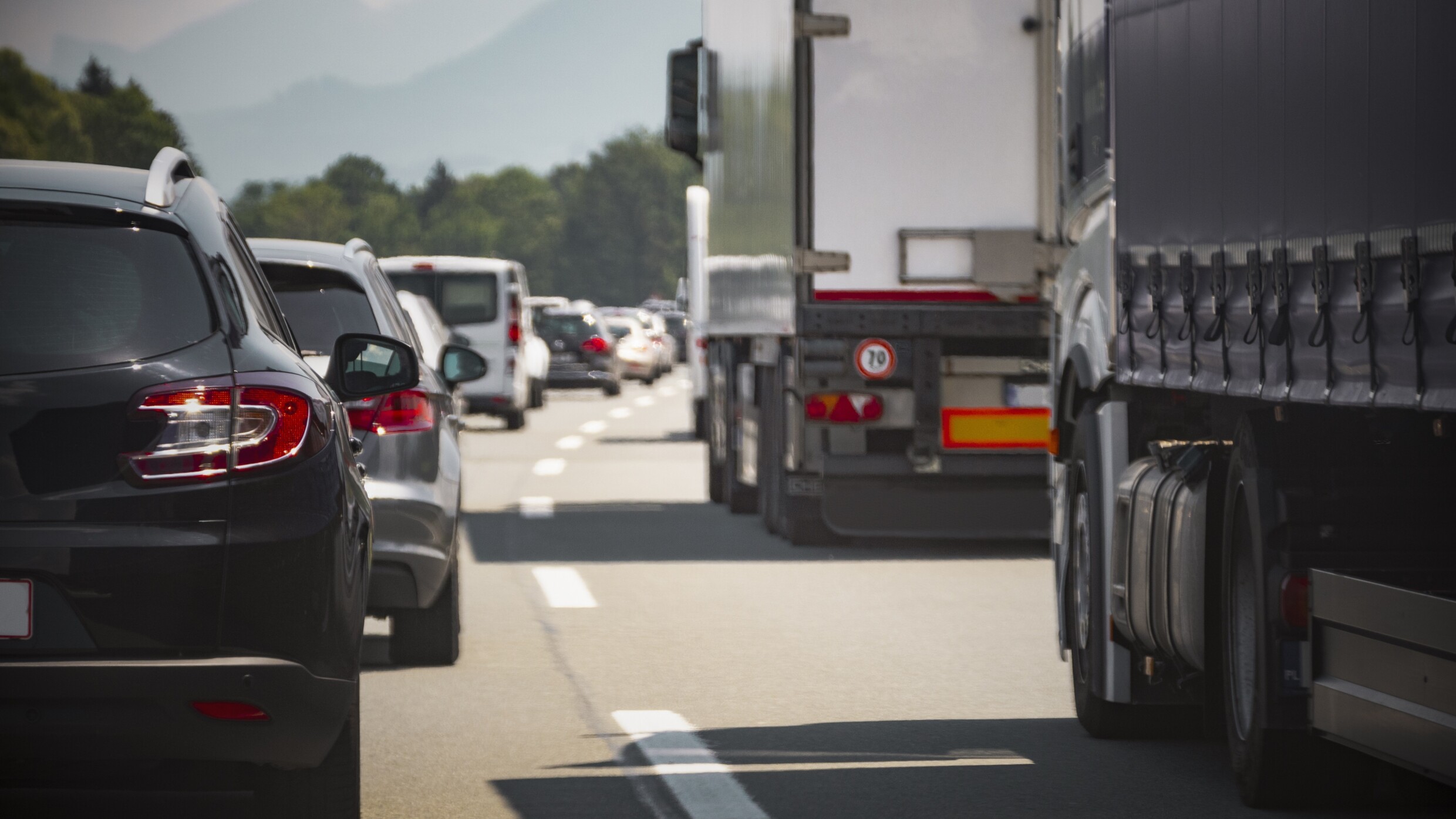Read next
Future mobility — market analysis, part 1
Autonomous locomotion in business use
When we think about autonomous vehicles, we usually think of self-driving cars where people are mere passengers. In the business domain, however, their potential lies in logistics. New technologies could fundamentally change the transportation of goods, making it safer and more efficient. An overview of the current status of a variety of autonomous vehicles in industry.



© iStock.com/deepblue4you
Heavy trucks and platooning
More than 3.7 billion tons of goods were transported by trucks in Germany in 2019. This corresponds to 80 percent of all transports. This makes heavy trucks the most frequently used means of transport for freight transport by far. Due to their high commercial importance for businesses, the market entry of autonomous trucks is expected earlier than autonomous cars.
So-called platooning solutions, in particular, promise major benefits: Trucks that are traveling the same route connect with each other using the corresponding infrastructure and via car-to-car (C2C) communication, forming a platoon. The driver of the first vehicle chooses the direction and speed. The other trucks receive data from them in real time and automatically follow at a distance of 15-21 meters — much shorter than under normal circumstances.
As a result, the slipstream of the vehicle in front can be optimally used, saving fuel and cutting emissions. If it only takes one driver to steer the whole platoon, this transportation option will be highly efficient for logistics companies.
The technology behind it is already fairly highly developed, because platooning is based largely on assistance systems such as cruise control and emergency braking systems that are already used in standard vehicles. In addition, C2C communication plays a very important role. At the present time, however, the benefits of platooning cannot be captured yet. German traffic regulations require a minimum distance of 50 meters between heavy trucks on freeways, which means legal changes will be needed before platoons can become mainstream.
Autonomous mobile robots (AMR)
Logistics processes are characterized above all by their complexity: The needed goods have to arrive in the right place at the right time and in the right quantity — and ideally as inexpensively as possible. Autonomous mobile robots (AMR) are increasingly being used to optimize and automate these processes. AMRs are driverless transportation systems that move and act autonomously in their environment. The robots use sensors and artificial intelligence (AI) to select a route, avoid obstacles automatically, identify the relevant goods and bring them to their destination
AMRs are already being used in many places, particularly to transport lightweight goods. According to a recent forecast by Research and Markets, the AMR market will experience strong growth in the coming years and reach a global market volume of 58.9 billion dollars in 2026. Since AMRs are used on private grounds, regulatory obstacles are not considered to be critical.
There are several technical challenges, however: When the environment changes, for example, because new products are warehoused, it is currently necessary to update and revalidate the entire firmware. This process takes time and incurs development costs. The Fraunhofer Institute for Cognitive Systems IKS has developed a framework called ResilientSOA that enables more flexible updates and orchestration of the software of the driverless transportation systems, while maintaining reliability and safety. To find out exactly how this works, watch this video.
Agricultural machines
In contrast to street traffic, autonomous driving is already reality for agricultural machines — at least to an extent. Fields and meadows pose other challenges, however: Cars on the street can use road markings as guides. In contrast, agricultural machines are used in unstructured, dynamic, open territory. This complicates the machine perception.
In addition, uneven grounds, dust and mud pose a challenge for optical sensors. That’s why autonomous tractors, harvesters, trailers and field robots have to be equipped with infrared, microwaves and other sensor technology, so they can identify obstacles that are concealed by tall plants as well.
The machines also have to be able to differentiate between different kinds of plants and determine their maturity level. Another difficulty in rural areas is often the insufficient radio link, which can result in failure of the data transmission and thus an early breakdown of the machine. Fraunhofer IKS supports manufacturers of agricultural machinery, agricultural technology and agricultural software in meeting these challenges and is developing solutions for smart farming.
Fully autonomous agricultural machines are no longer a far-off future technology: According to a study by the Fraunhofer Institute for Experimental Software Engineering IESE, experts predict that fully autonomous, driverless machines will be in use by 2035. A driver will be needed to bring the machines to the field first, however. Experts are critical of the existing regulatory obstacles, because they say the current state of legislation for the market for agricultural equipment is highly complex and in need of improvement.
This article is the start of a series of articles on the topic of "Mobility of the Future". It will be followed in the next few weeks by: "Autonomous driving - goal and reality".



